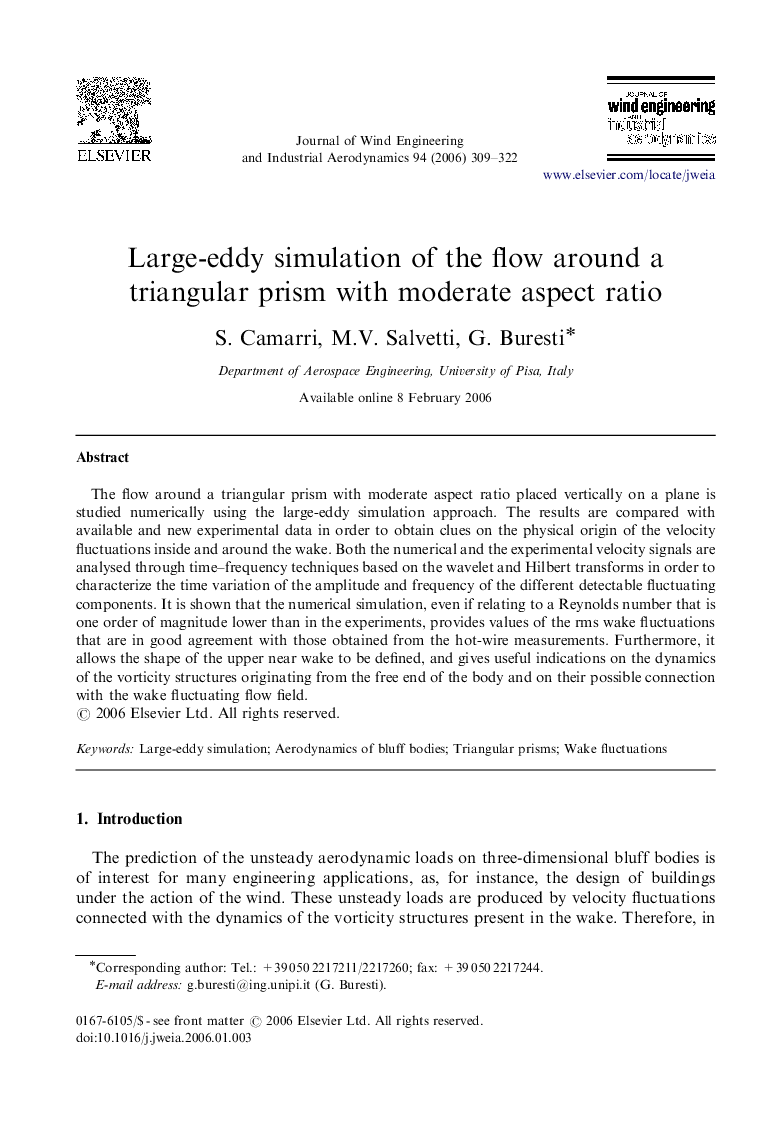| Article ID | Journal | Published Year | Pages | File Type |
|---|---|---|---|---|
| 292671 | Journal of Wind Engineering and Industrial Aerodynamics | 2006 | 14 Pages |
The flow around a triangular prism with moderate aspect ratio placed vertically on a plane is studied numerically using the large-eddy simulation approach. The results are compared with available and new experimental data in order to obtain clues on the physical origin of the velocity fluctuations inside and around the wake. Both the numerical and the experimental velocity signals are analysed through time–frequency techniques based on the wavelet and Hilbert transforms in order to characterize the time variation of the amplitude and frequency of the different detectable fluctuating components. It is shown that the numerical simulation, even if relating to a Reynolds number that is one order of magnitude lower than in the experiments, provides values of the rms wake fluctuations that are in good agreement with those obtained from the hot-wire measurements. Furthermore, it allows the shape of the upper near wake to be defined, and gives useful indications on the dynamics of the vorticity structures originating from the free end of the body and on their possible connection with the wake fluctuating flow field.
